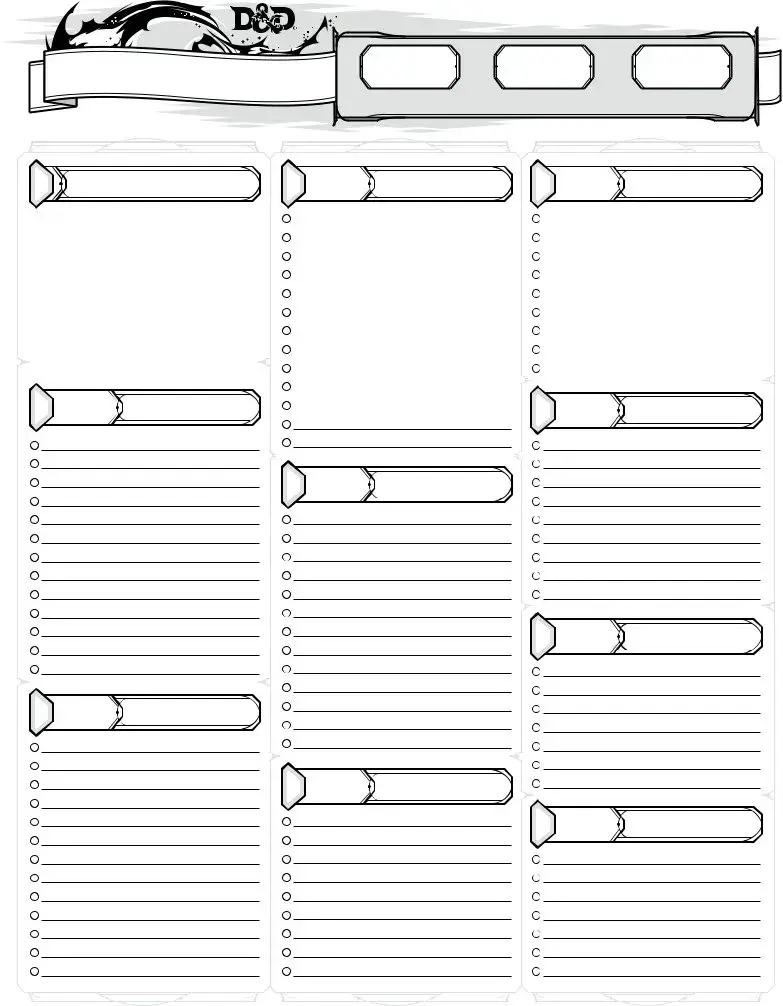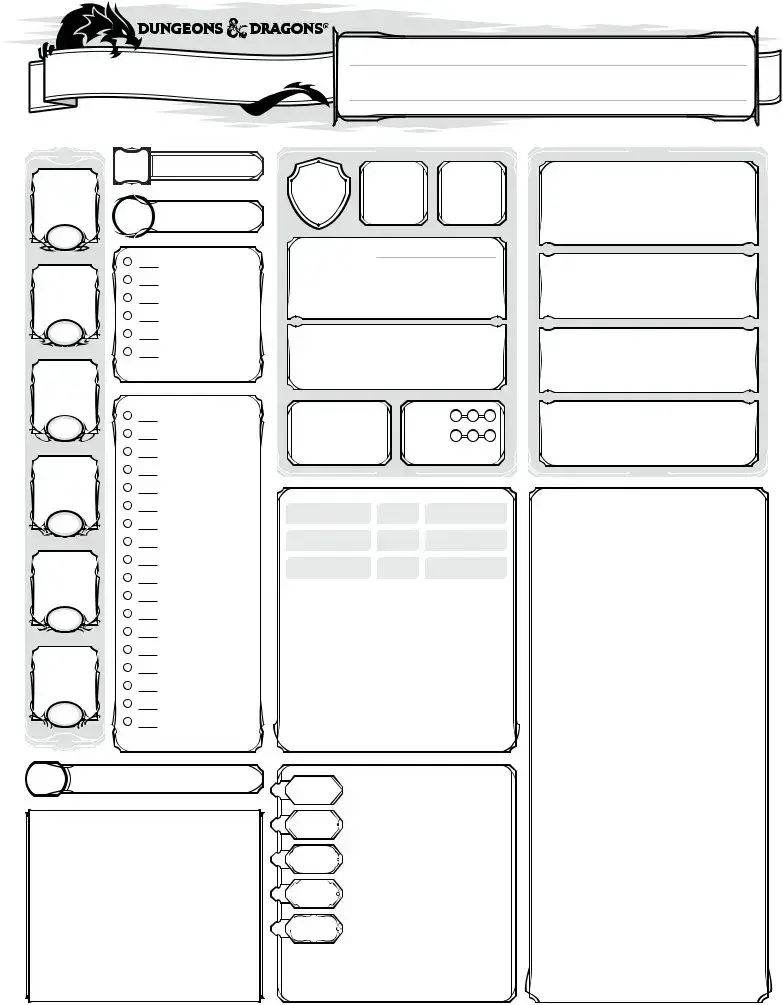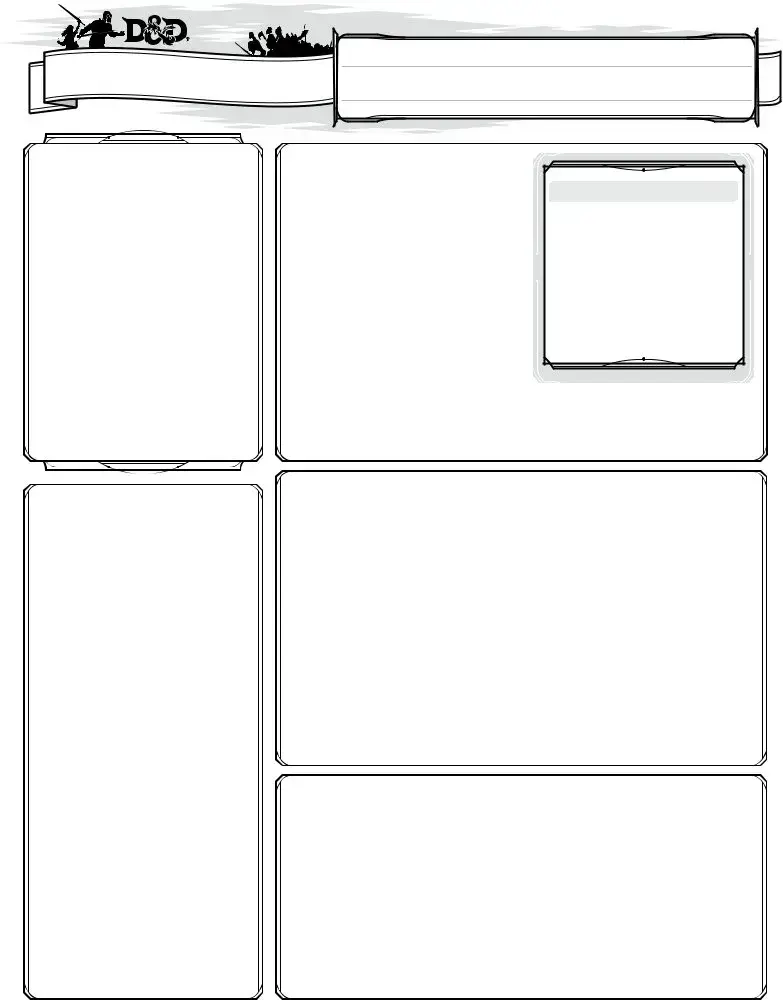The Dungeons & Dragons (D&D) Character Sheet is a unique document, but it shares similarities with several other forms used in various gaming and role-playing contexts. One such document is the RPG Character Sheet. Like the D&D Character Sheet, it serves as a record of a player's character, detailing abilities, skills, and equipment. Both sheets allow players to track their character's progress and development throughout the game, ensuring that players have a comprehensive understanding of their characters' capabilities.
Another comparable document is the Tabletop Role-Playing Game (TTRPG) Character Sheet. This form often includes sections for character background, stats, and inventory, similar to the D&D format. TTRPG sheets may differ in specific mechanics but share the core purpose of helping players immerse themselves in their character's story and gameplay. Both documents facilitate a smoother gaming experience by organizing crucial information in one place.
Video game character profiles also bear resemblance to the D&D Character Sheet. In many role-playing video games, players create characters with specific attributes and skills, much like in D&D. These profiles often include health points, abilities, and gear, mirroring the essential details found on a character sheet. Both formats help players visualize their characters and make strategic decisions during gameplay.
The Pathfinder Character Sheet is another document that closely aligns with the D&D sheet. Pathfinder, a game derived from D&D, features a character sheet that includes similar sections for abilities, skills, and spells. Players of both games can find common ground in how they track character progression and manage resources, despite some differences in rules and mechanics.
Character sheets for other tabletop games, such as Shadowrun or GURPS, also share similarities with the D&D format. These sheets typically include sections for character attributes, skills, and equipment, providing players with a structured way to manage their characters. While each game has its unique mechanics, the fundamental idea of organizing character information remains consistent across these forms.
In addition to these various character management documents, it's important for players engaging in tabletop games to also consider the essential paperwork involved in their real estate dealings, such as the Georgia PDF Forms, which is critical for ensuring transparent and smooth transactions.
Board games with role-playing elements, like Betrayal at House on the Hill, have character cards that function similarly to a character sheet. These cards summarize a character's abilities and health, allowing players to engage with the game's narrative. Just as in D&D, these documents help players connect with their characters and make informed decisions during gameplay.
In live-action role-playing (LARP) scenarios, participants often use character sheets that resemble those in tabletop games. These sheets document character traits, skills, and backstory, enabling players to embody their roles fully. The emphasis on character development and narrative parallels the D&D Character Sheet's focus on enhancing the gaming experience through detailed character management.
Finally, character bios in storytelling games or writing workshops can be likened to a D&D Character Sheet. These bios often include character traits, motivations, and backstories, serving as a foundation for character development. While not used for gameplay, these documents help writers and players alike explore their characters more deeply, similar to the way a character sheet enhances the D&D experience.













